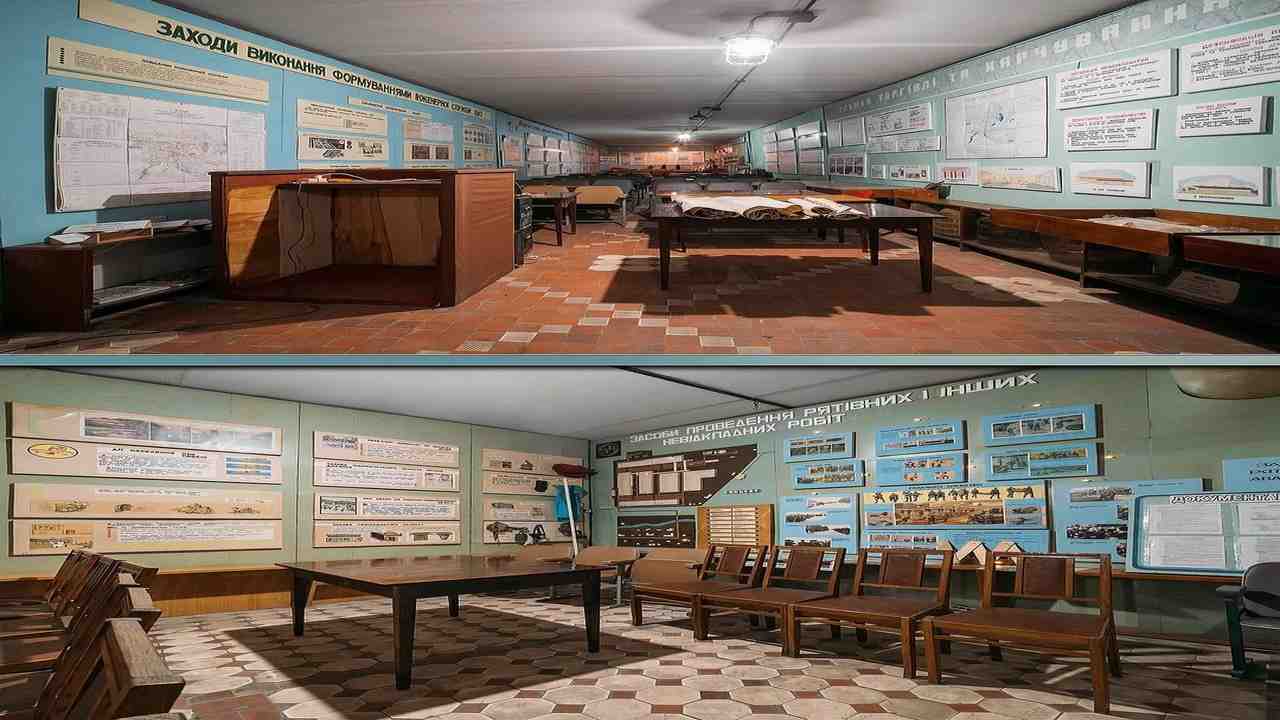Deep in the heart of Kazakhstan’s vast desert steppe lies one of the most extraordinary urban exploration destinations on Earth – the abandoned sections of Baikonur Cosmodrome. Since the first sensational photographs surfaced online years ago, this remote site has captivated the imagination of urban explorers worldwide, offering a once-in-a-lifetime opportunity to witness the remnants of the Soviet space program up close.
The Legend of Baikonur: Where Dreams of Space Became Reality
Baikonur Cosmodrome stands as humanity’s gateway to the stars, the launch site that sent Yuri Gagarin into orbit and continues to ferry astronauts to the International Space Station. However, beyond the active launch facilities lies a haunting landscape of abandoned hangars, forgotten spacecraft, and the ghostly remains of the Soviet Union’s most ambitious space projects.
The site’s mystique stems from its dual nature – part active spaceport, part industrial graveyard. While modern rockets still blast off from operational pads, the abandoned sections contain relics from the golden age of space exploration, including the legendary Buran space shuttle and Energia rocket system that represented the pinnacle of Soviet aerospace engineering.
The Crown Jewels: Buran and Energia
At the heart of every Baikonur expedition lies the ultimate prize – standing face-to-face with the actual Buran space shuttle and its massive Energia rocket carrier. These technological marvels, forever sealed within massive hangars, represent one of the most ambitious and ultimately tragic chapters in space exploration history.
The Buran Space Shuttle Program
The Buran program was the Soviet answer to NASA’s Space Shuttle, designed to match and exceed American capabilities in space. Only one unmanned orbital flight was completed in 1988, but the program produced several shuttle orbiters that now rest in various states of preservation and decay across the Baikonur complex.
Seeing these spacecraft in person provides an almost spiritual experience for space enthusiasts. The sheer scale of the shuttles, their heat-resistant tiles still intact, and the sophisticated engineering visible in every detail creates an overwhelming sense of awe. These aren’t museum pieces behind velvet ropes – they’re real spacecraft that were built to carry humans to the stars.
The Energia Super Heavy-Lift Rocket









The Energia rocket system, designed to launch the Buran shuttle, remains one of the most powerful rockets ever successfully flown. Standing beside these towering machines offers perspective on the incredible ambition of the Soviet space program and the engineering prowess required to reach orbit.
The abandoned Energia rockets, some partially assembled and others in various stages of completion, provide unique insights into rocket construction techniques that are rarely visible to the public. The complexity of the plumbing, electronics, and structural elements becomes apparent when viewed up close.
Planning Your Baikonur Expedition: Essential Preparation
Legal Considerations and Permissions
Exploring abandoned areas of Baikonur requires careful planning and respect for local laws. The cosmodrome remains an active facility with strict security protocols. Many areas are off-limits, and unauthorized entry can result in serious legal consequences.
Legitimate exploration opportunities exist through organized tours and special permissions, though these require advance planning and significant financial investment. The remote location and security considerations make independent exploration extremely challenging and potentially dangerous.
Physical and Mental Preparation
The journey to Baikonur tests both physical endurance and mental resilience. The Kazakh steppe presents harsh conditions including extreme temperatures, limited water sources, and vast distances between settlements. Proper preparation includes physical conditioning, survival training, and thorough equipment planning.
The psychological impact of witnessing these abandoned space artifacts shouldn’t be underestimated. Many explorers report overwhelming emotions when confronting the reality of abandoned dreams and the impermanence of even humanity’s greatest achievements.
The Journey Through Kazakhstan’s Desert Steppe
Crossing the Endless Landscape
The approach to Baikonur requires crossing hundreds of miles of seemingly endless steppe, a landscape that changes subtly but dramatically as you progress deeper into Kazakhstan. The journey itself becomes part of the adventure, offering time to contemplate the isolation and determination required to build a spaceport in such a remote location.
The desert steppe reveals its own beauty – vast skies that stretch to every horizon, wildlife adapted to harsh conditions, and the occasional reminder of human presence in the form of abandoned settlements or Soviet-era infrastructure. This landscape shaped the character of the space program, demanding resilience and self-sufficiency from everyone involved.
Logistics and Survival Challenges
Reaching Baikonur requires careful attention to logistics including fuel availability, water supplies, and emergency equipment. The remote location means that mechanical failures or medical emergencies can become life-threatening situations without proper preparation.
Communication systems often fail in remote areas, making satellite phones or emergency beacons essential safety equipment. Weather conditions can change rapidly, turning passable roads into impassable muddy tracks or creating sandstorms that reduce visibility to mere feet.
Inside the Hangars: A Cathedral of Space Technology
The Atmosphere of Abandonment
Entering the abandoned hangars creates an almost cathedral-like atmosphere. The vast spaces, designed to accommodate spacecraft, dwarf human visitors and create an overwhelming sense of scale. Shafts of light filtering through broken skylights illuminate dust motes that dance around billion-dollar spacecraft, creating an ethereal atmosphere that photographers struggle to capture.
The silence within these spaces feels profound, broken only by the occasional settling of metal or the distant howl of wind through damaged structures. This quietude contrasts sharply with the cacophony that once filled these spaces during active operations.
Technical Marvels in Decay
The spacecraft and rockets within these hangars represent the pinnacle of 20th-century engineering, yet they show the inevitable effects of time and neglect. Corrosion, dust accumulation, and structural damage tell stories of ambition, achievement, and ultimate abandonment.
Despite the decay, the sophisticated engineering remains visible and impressive. The precision manufacturing, complex systems integration, and innovative solutions to space travel challenges become apparent when viewed at close range. These artifacts provide insights into engineering approaches that influenced modern spacecraft design.
The Human Stories Behind the Hardware
Dreams of the Space Age
Every piece of hardware at Baikonur represents thousands of human hours, dreams of reaching the stars, and the collective effort of an entire nation committed to space exploration. The abandoned spacecraft carry the hopes and aspirations of engineers, cosmonauts, and political leaders who believed in humanity’s space-faring future.
The personal stories of those who worked on these projects add depth to the exploration experience. Understanding the human cost of these achievements – the families separated by work demands, the careers dedicated to projects that were ultimately cancelled, and the pride of those who achieved the impossible – transforms mechanical artifacts into monuments to human ambition.
The End of an Era
The abandonment of these facilities marks the end of the Soviet space program’s most ambitious period. The economic collapse that made continued operations impossible created a time capsule of space age technology, preserving a moment when humanity’s reach toward the stars seemed unlimited.
This abandonment also represents the broader story of the Soviet Union’s collapse and the human cost of political and economic upheaval. The empty hangars stand as monuments to both achievement and loss, success and failure.
Photography and Documentation Challenges
Capturing the Impossible
Photographing the scale and atmosphere of abandoned Baikonur presents unique challenges. The vast spaces, dramatic lighting conditions, and overwhelming scale of the spacecraft make traditional photography techniques inadequate for capturing the full experience.
Many photographers report that no image truly conveys the emotional impact of standing beside these space vehicles. The three-dimensional reality, the sense of scale, and the atmosphere of abandonment resist capture through conventional means.
Preserving History
Documentation efforts at Baikonur serve an important historical purpose, creating records of these artifacts before further deterioration makes them inaccessible. These photographs and videos become historical documents that preserve the memory of humanity’s greatest space achievements.
The responsibility of documentation weighs heavily on those with access to these sites. The images created may be the only way future generations can experience these remarkable artifacts as they exist today.
The Future of Space Exploration Tourism
Growing Interest in Space Heritage
Interest in space exploration tourism continues to grow as more people seek authentic experiences connected to humanity’s greatest adventures. Baikonur represents the ultimate destination for space enthusiasts, offering encounters with real spacecraft that few humans have experienced.
The challenge lies in balancing access with preservation, ensuring that these incredible artifacts remain protected while allowing passionate explorers to experience them firsthand. This balance requires careful planning, respect for local regulations, and commitment to preservation.
Sustainable Exploration Practices
Future access to Baikonur’s abandoned areas will depend on sustainable exploration practices that minimize impact while maximizing the educational and inspirational value of these sites. This includes working with local authorities, supporting preservation efforts, and maintaining the highest standards of responsible exploration.
Conclusion: Standing at the Crossroads of Dreams and Reality
A Baikonur expedition represents more than urban exploration – it’s a pilgrimage to the sites where humanity’s greatest dreams took physical form. Standing beside the Buran shuttle and Energia rocket provides perspective on human ambition, the cost of reaching for the stars, and the impermanence of even our greatest achievements.
These abandoned spacecraft serve as powerful reminders that exploration requires courage, commitment, and acceptance of risk. They inspire continued efforts to push beyond our current limitations while honoring the sacrifices of those who came before.
For those brave enough to journey across the Kazakh steppe, Baikonur offers an experience that transcends typical urban exploration. It provides a direct connection to humanity’s space-faring heritage and a profound appreciation for the remarkable achievements that brought us to the threshold of the stars.
The expedition to Baikonur changes those who undertake it, providing memories and perspectives that last a lifetime. In a world of increasingly virtual experiences, standing face-to-face with these monuments to human ambition offers something irreplaceable – a tangible connection to our species’ greatest adventure.
![]()






